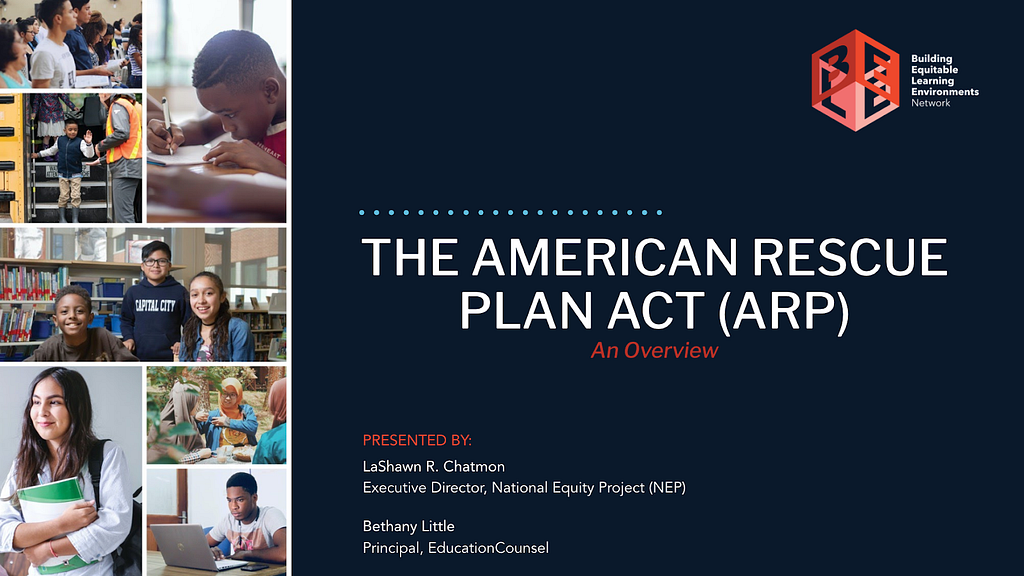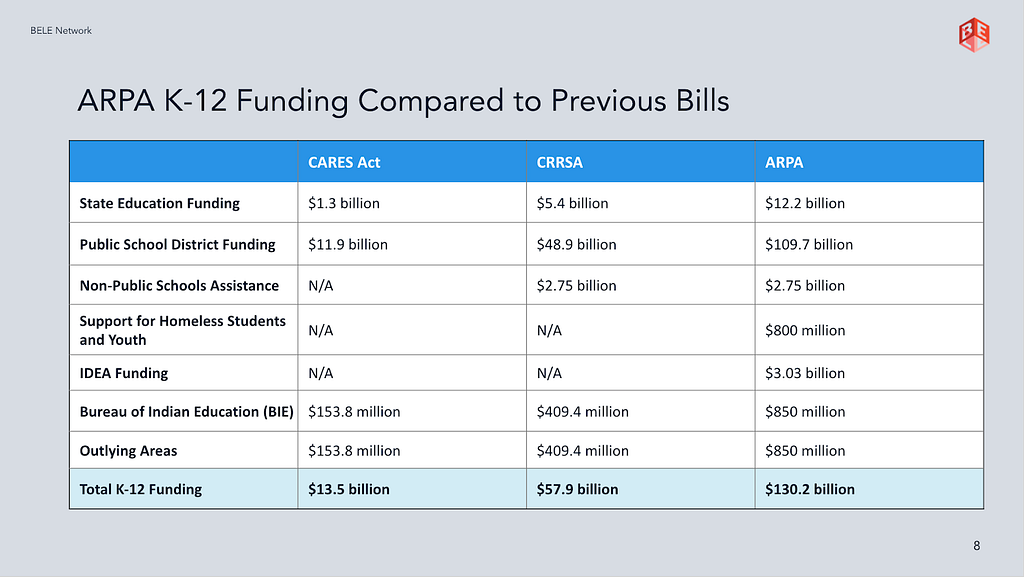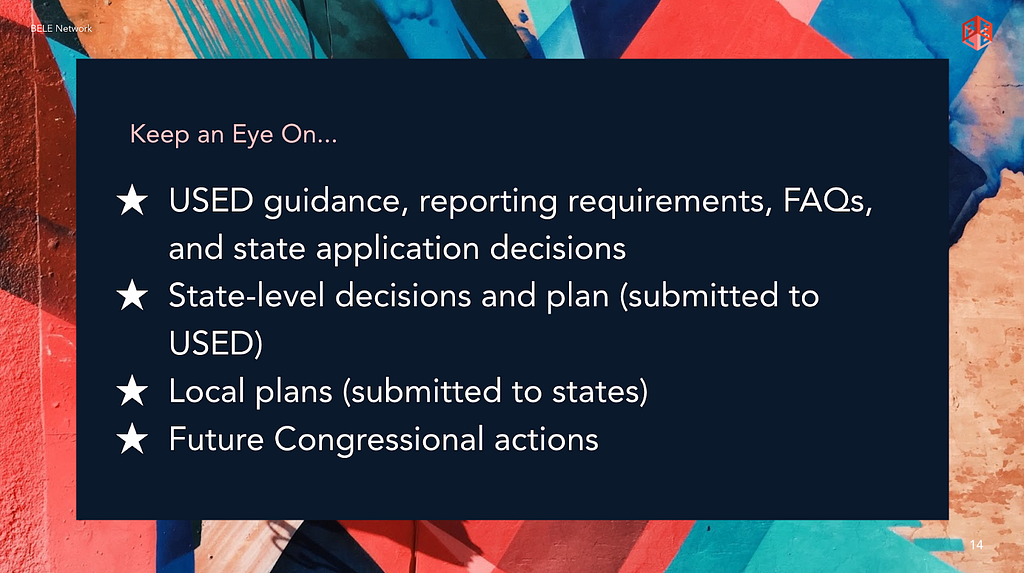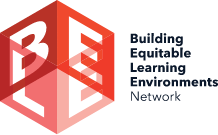How to Strategically Invest Funds To Build Equitable Learning Environments
By The BELE Network

On April 22nd, the BELE Network hosted a webinar led by Bethany Little of EducationCounsel and LaShawn Chatmon of the National Equity Project to discuss how the strategic investment of funding from the American Rescue Plan (ARP) Act can build equitable learning environments for students. Watch the recording and read highlights below to learn more:
The BELE Network defines “equity” as both a noun and a verb:
Equity is achieved when educational systems ensure that every child has what they need — when they need it — to thrive socially, emotionally and academically.
Educational equity is attained when every young person’s experience, wellbeing, and academic success are considered in the design of learning environments and patterns of success or failure are no longer predicted by race or any other social or cultural marker.
The ARP provides $1.9 trillion to support continued relief and recovery from COVID-19 pandemic, with the historic amount of $210.8 billion being invested in education, particularly in early childhood education, K-12, and higher education. Notable provisions include funding directed towards addressing students experiencing homelessness and students with disabilities, and meeting students’ social, emotional, and academic needs.

State governments will have 60 days after they receive the funds to distribute them to local education agencies. Two-thirds of those funds were made available on March 24, 2021. Local education agencies must develop and publish a school reopening plan within 30 days of receiving the funds from their states and will have until September 30, 2024 to expend them.
Though the window for drafting a plan is short, schools and districts must be deliberate in their allocation of funds. Investing in equity means planting seeds for the future, not just filling holes.

The past year has been a difficult one for students and educators alike, but the root of the inequities and traumas exacerbated by COVID-9 did not begin with the pandemic and will not end with it, either. This one-time distribution of ARP funds gives educators the opportunity to invest in building equitable learning environments for students and ensure that the progress towards equity can be made and sustained.
Watch the webinar above and check out the BELE Network’s guidance on investing ARP funds here.
The Building Equitable Learning Environments (BELE) Network is a diverse collaborative of organizations that are working to advance equity in education. We share a bold vision of thriving youth, families, caregivers, and communities — and of education systems that foster academic, social, emotional, and cognitive growth and well-being for all. We envision a world where a child’s racial and cultural identity and unique learning path are strong contributors to their success in school and in life, and where zip code and family income do not determine the quality of a child’s education.
EducationCounsel uses deep experience in policy, strategy, law, and advocacy to develop and drive policy initiatives — on the local, state, and national levels — to close the achievement gaps and improve education outcomes for all.
The National Equity Project is a leadership and systems change organization committed to increasing the capacity of people to achieve thriving, self-determining, educated, and just communities. Our mission is to transform the experiences, outcomes, and life options for children and families who have been historically underserved by our institutions and systems.
The Raikes Foundation envisions an equitable education system where race, class, gender, language, and ability-status no longer hold any predictive power over a student’s chance of graduating from high school, being suspended, or completing a post-secondary degree.

